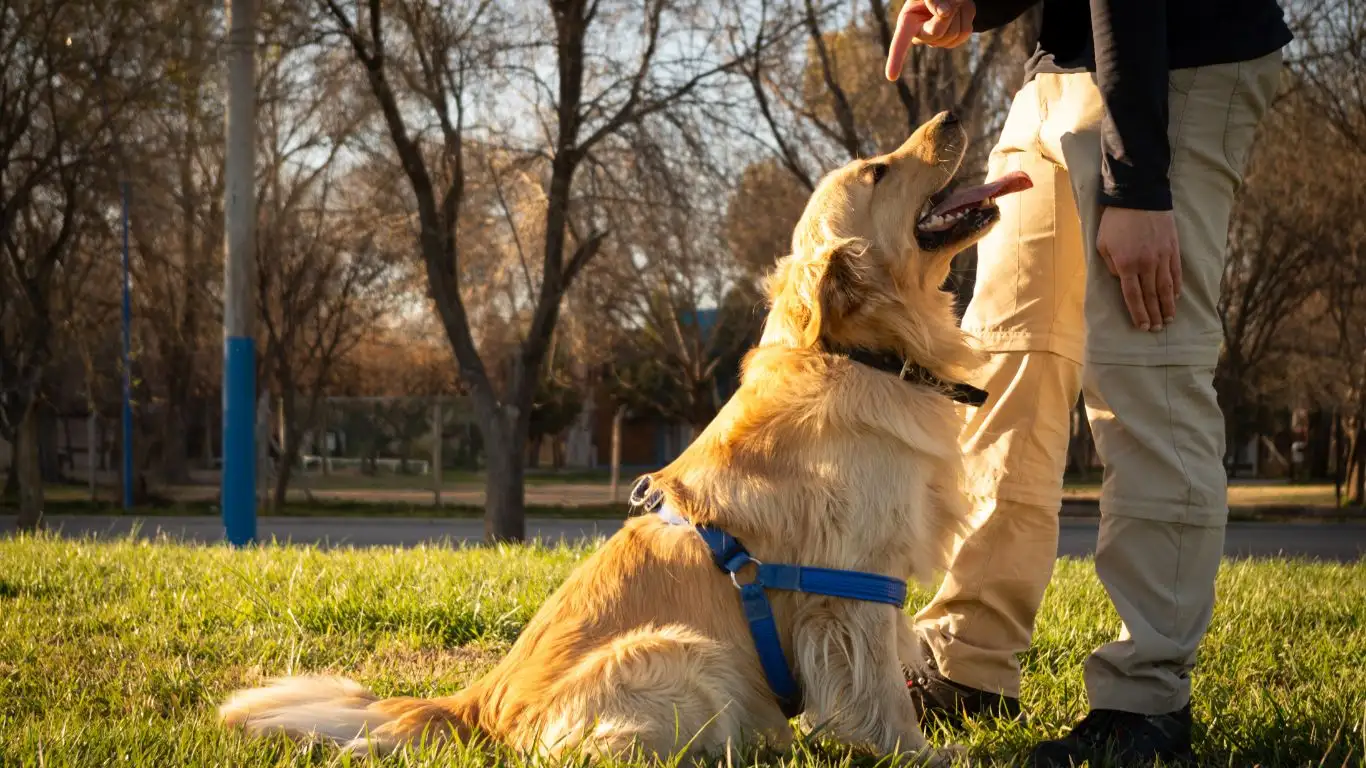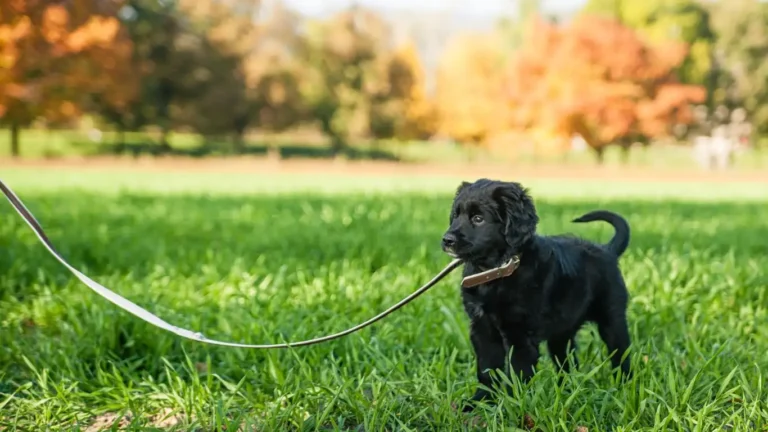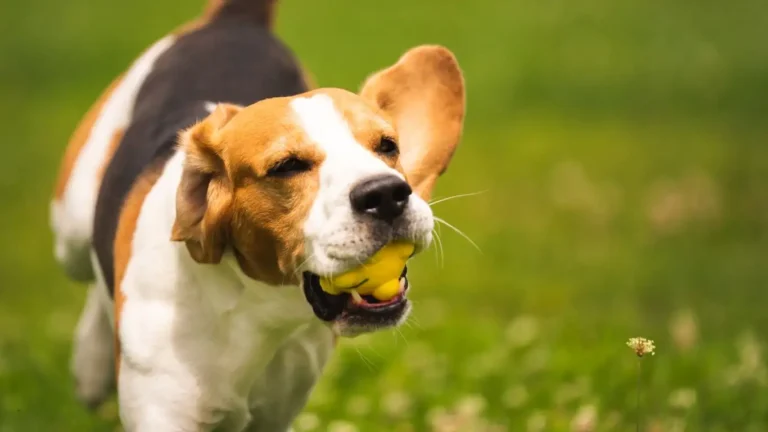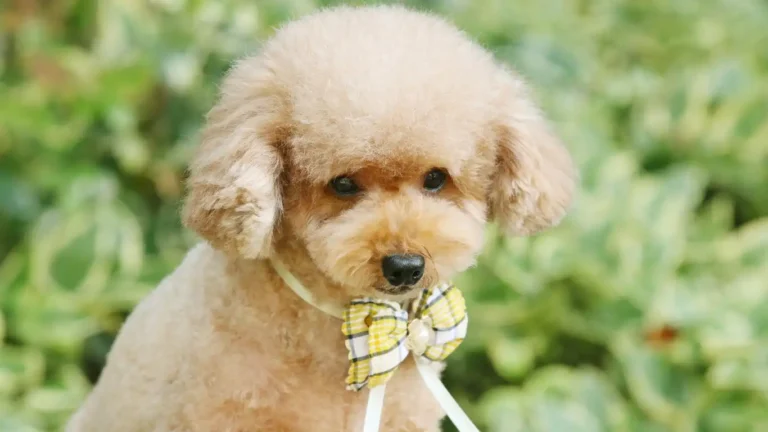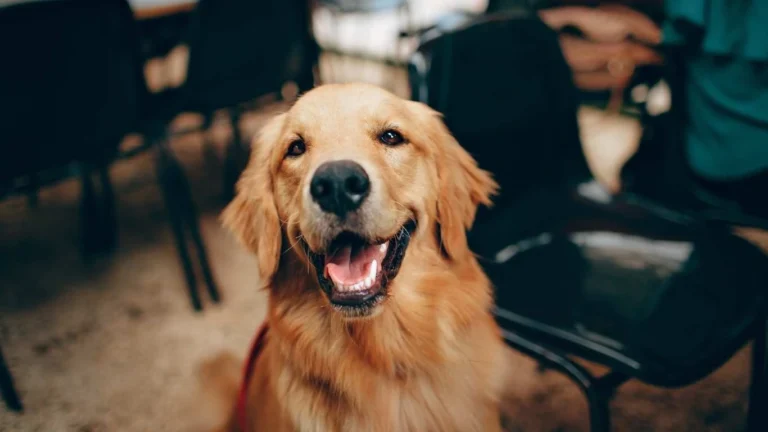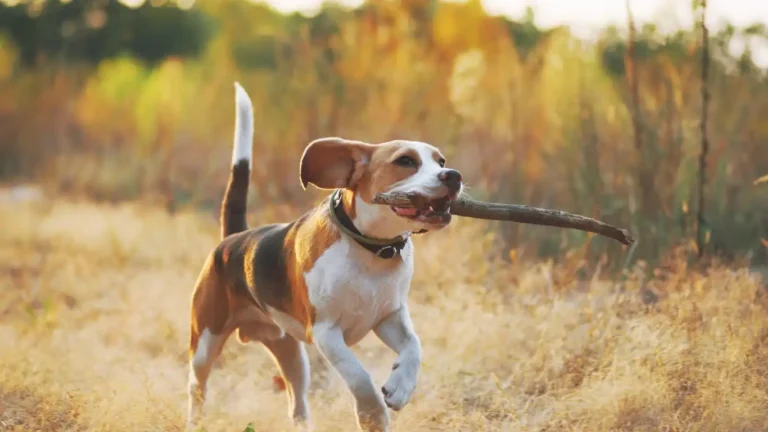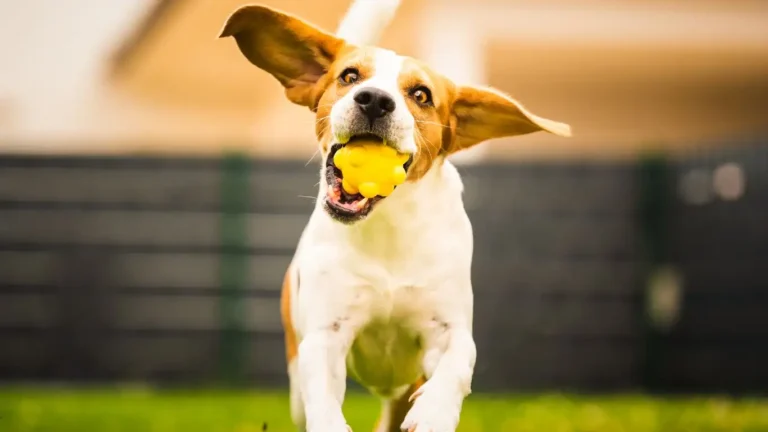How to Train a Dog to Stop Play Biting with Positive Reinforcement
As a Certified Professional Dog Trainer (CPDT-KA), I’ve spent years working with dogs and their owners, helping them create strong, trusting relationships through effective training. One of the most common issues I encounter is play biting, a behavior that can be frustrating for pet parents and concerning for guests. But don’t worry! If you’re wondering how to train a dog to stop play biting, you’re in the right place. In this guide, I’ll share with you the techniques I’ve personally found to be effective, including real-world tips and experiences that will make your dog’s training journey smoother and more enjoyable.
Why Does My Dog Bite During Play?
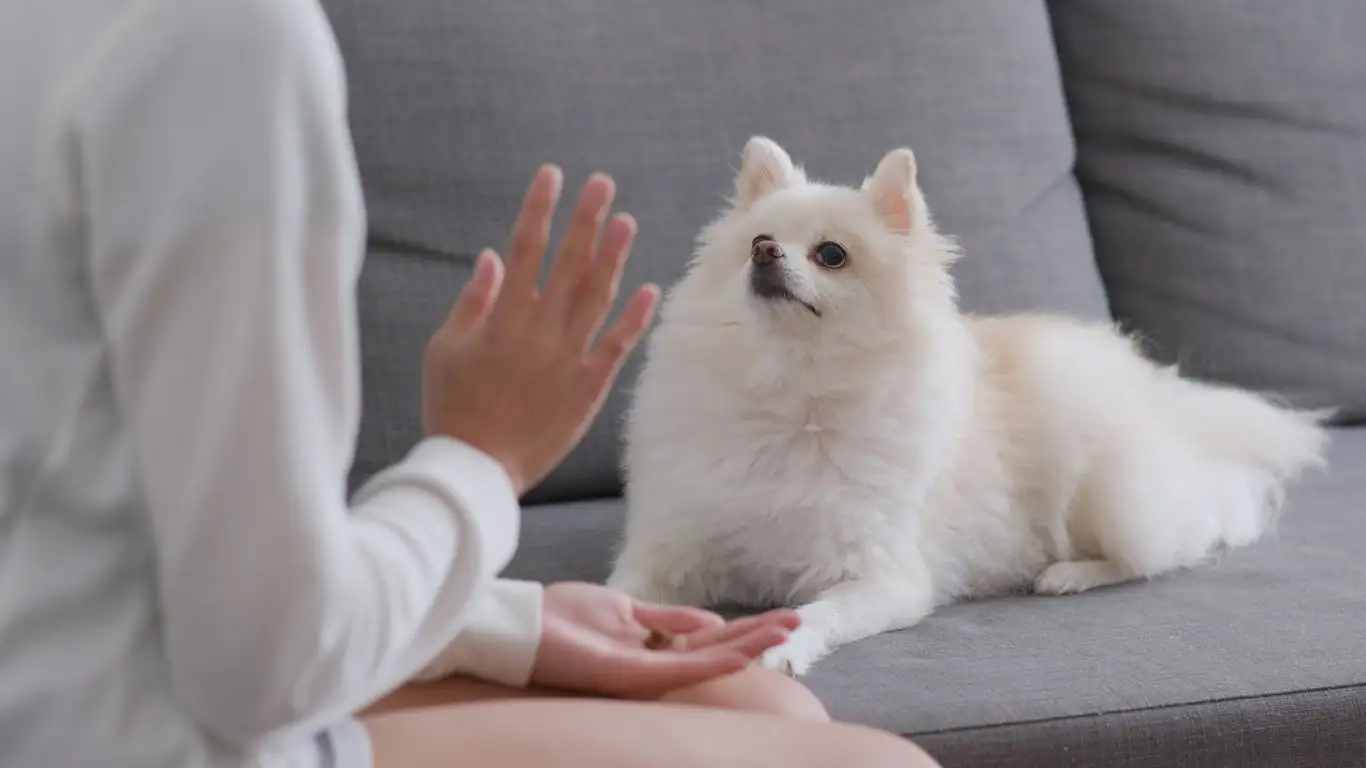
Before diving into the methods for stopping play biting, it’s important to understand why dogs engage in this behavior. As natural-born hunters and pack animals, dogs are wired to use their mouths in many different ways. When they play, it often mimics behaviors they would use to catch prey or interact with other dogs. However, what might seem like innocent fun can quickly escalate into an annoying habit or even an aggressive behavior if left unchecked.
In addition to their instinctual behavior, puppies are still learning how to control their bite. They haven’t yet mastered the concept of bite inhibition—the ability to control the force of their bite. In the wild, dogs learn this skill by playing with other dogs, where the feedback of a yelp or a stop in play helps them understand when to back off. For puppies raised in homes without older dogs or those with limited socialization, this learning can be delayed or incomplete.
As a dog trainer, I can tell you that play biting is often a phase in a dog’s development, especially for puppies. However, it’s crucial to address it early to prevent it from becoming a problematic behavior later on.
Understanding the Different Types of Dog Biting
Not all dog biting is created equal. Understanding the different types of biting can help you determine the best course of action when addressing your dog’s behavior. Here are some common types of biting that can occur during play:
- Soft Biting: This is when a dog mouths or nibbles without applying much pressure. It’s typical in puppies and can be seen as an attempt to play or interact. While it might not hurt, it’s still important to teach them not to use their mouth on humans.
- Hard Biting: This occurs when a dog applies more pressure with their bite. It can be a sign of frustration or an attempt to assert dominance. This type of biting should be addressed immediately to prevent injury and further behavioral issues.
- Redirected Biting: Sometimes, dogs bite during play when they get overstimulated. If they can’t chase a toy or catch something they want, they might redirect that energy towards the nearest available target—your hands, feet, or clothing.
Identifying what kind of biting your dog is engaging in will help you determine whether it’s simply play or something more serious that requires professional intervention.
How to Train a Dog to Stop Play Biting
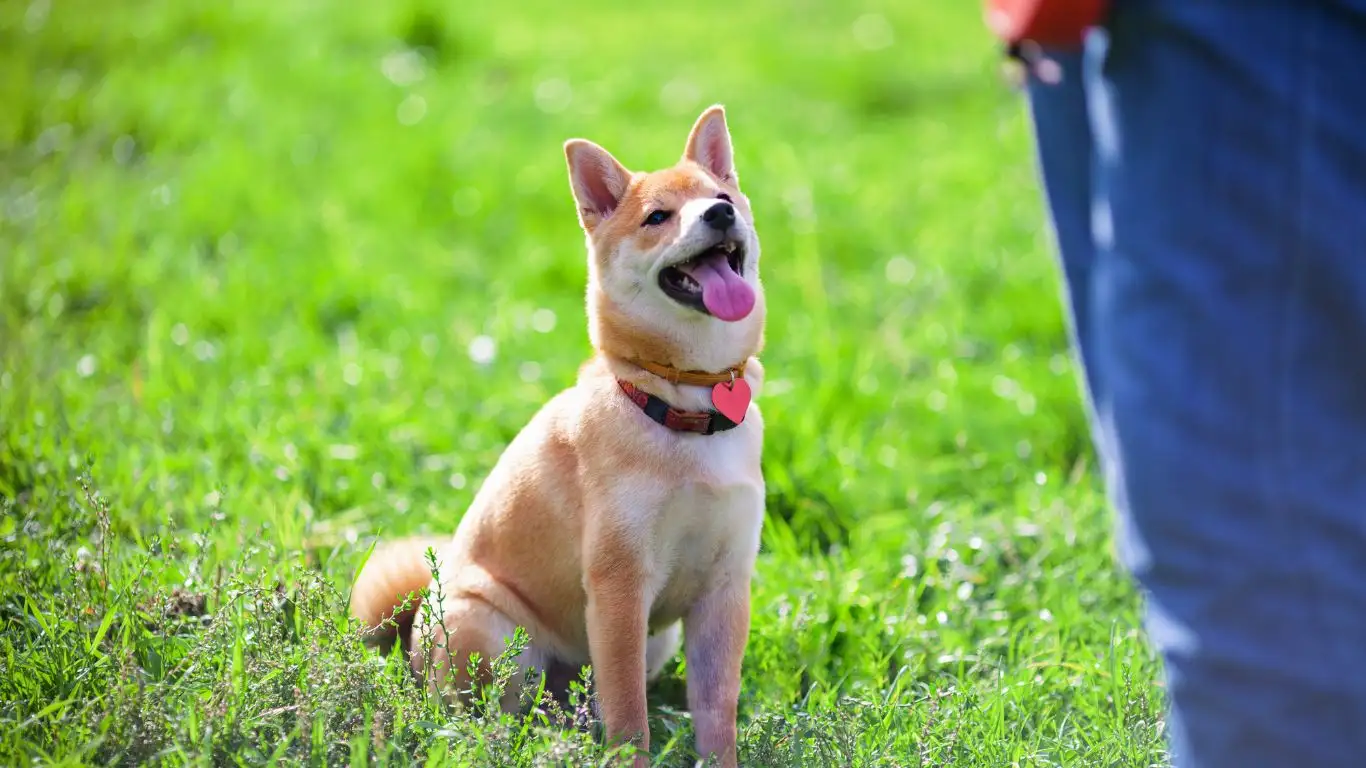
Now that you understand why dogs bite during play, it’s time to tackle the question of how to train a dog to stop play biting. The process involves patience, consistency, and positive reinforcement. Let me walk you through a step-by-step approach that I’ve successfully used with many of my clients:
1. Teach Bite Inhibition
One of the most important skills to teach your dog is bite inhibition. This means teaching them to control the force of their bite, so they don’t hurt you, even during play. Here’s how you can start:
- Playtime with Gentle Limits: During play sessions, allow your dog to engage with your hands or feet, but when they apply too much pressure, let out a sharp, high-pitched “Ouch!” or “No!” The goal is to mimic the feedback they would receive from other dogs. The sharp noise will startle them, causing them to stop momentarily. When they do, reward them with praise and a toy to redirect their attention.
- Stop Play Immediately: If your dog continues to bite too hard, stop the play session altogether. This teaches them that playtime ends when they don’t respect the boundaries. After a brief pause, you can resume playing if they calm down.
- Reinforce Positive Behavior: Whenever your dog gently mouths or interacts with you without applying pressure, reward them with treats or positive verbal feedback. This helps them understand what type of play is acceptable.
With consistency, your dog will begin to associate gentle play with positive outcomes, making it more likely they will stop play biting over time.
2. Provide Chew Toys and Appropriate Alternatives
Sometimes, dogs bite during play because they need to chew. This is especially true for puppies who are teething. Offering appropriate chew toys can help satisfy that need and keep your hands and feet safe!
- Choose the Right Toys: Select durable, safe chew toys that are suitable for your dog’s size and age. For example, soft rubber toys work well for puppies, while tougher nylon bones are great for adult dogs.
- Interactive Toys: Use toys that encourage interaction, such as tug ropes or fetch toys. These will help redirect your dog’s energy away from your hands and onto the toy, making play more engaging and less focused on biting.
- Rotate Toys Regularly: To keep things interesting, rotate your dog’s toys frequently. This prevents boredom and keeps them excited to play with their toys, rather than using you as their chew toy.
Understanding the Role of Play and Exercise in Reducing Play Biting
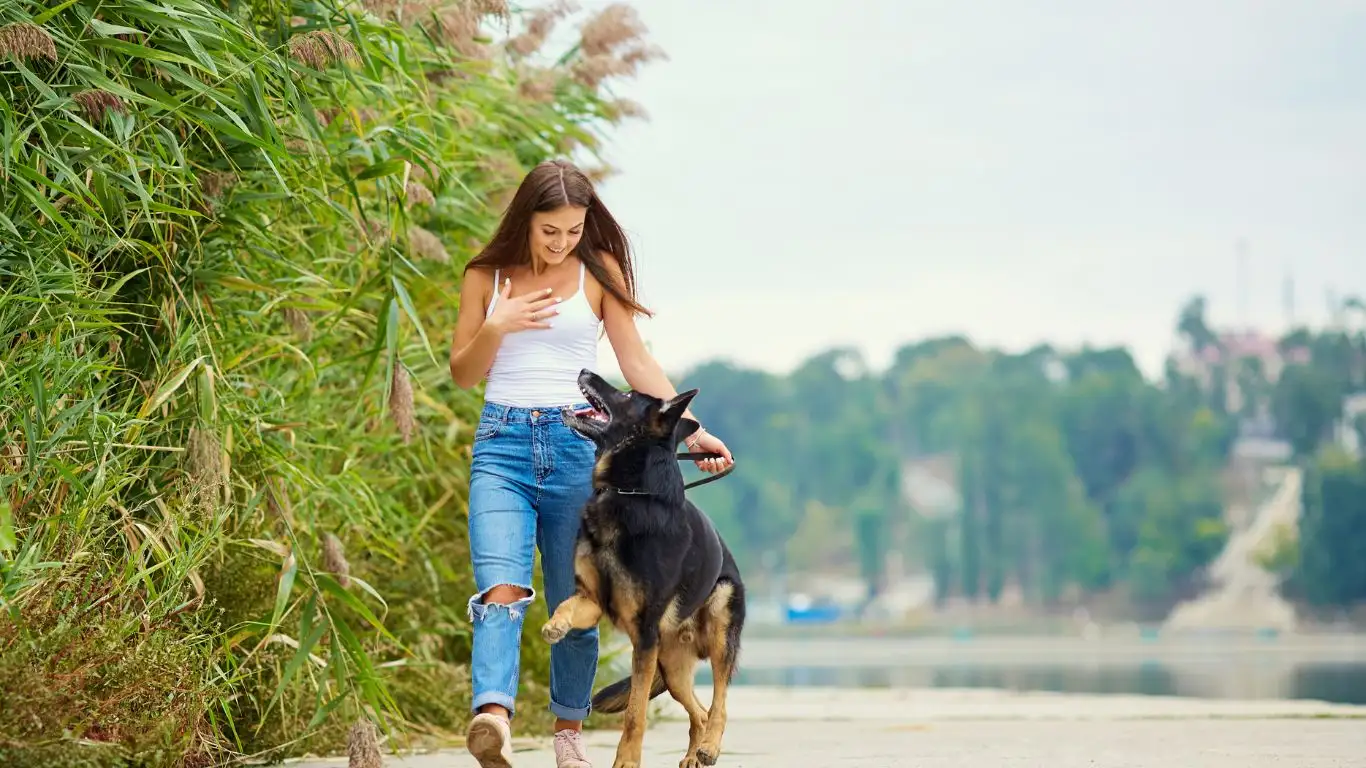
Often, dogs engage in play biting because they have excess energy or need mental stimulation. Proper exercise and playtime can go a long way in reducing the likelihood of play biting. When dogs are tired out, they’re less likely to engage in problematic behaviors. Here’s how to manage your dog’s play and exercise routine:
- Regular Physical Exercise: Ensure your dog gets plenty of exercise, whether it’s through walks, runs, or play sessions. A tired dog is a well-behaved dog, and a good run in the park or playtime in the yard can help burn off extra energy that might otherwise be channeled into biting.
- Mental Stimulation: Dogs also need mental exercise to stay content. Puzzle toys, training sessions, or interactive games are a great way to engage their minds and reduce boredom, which can contribute to biting behaviors.
Incorporating both physical and mental exercises into your dog’s routine will help prevent the energy buildup that often leads to play biting and other undesirable behaviors.
Positive Reinforcement: A Key to Stopping Play Biting
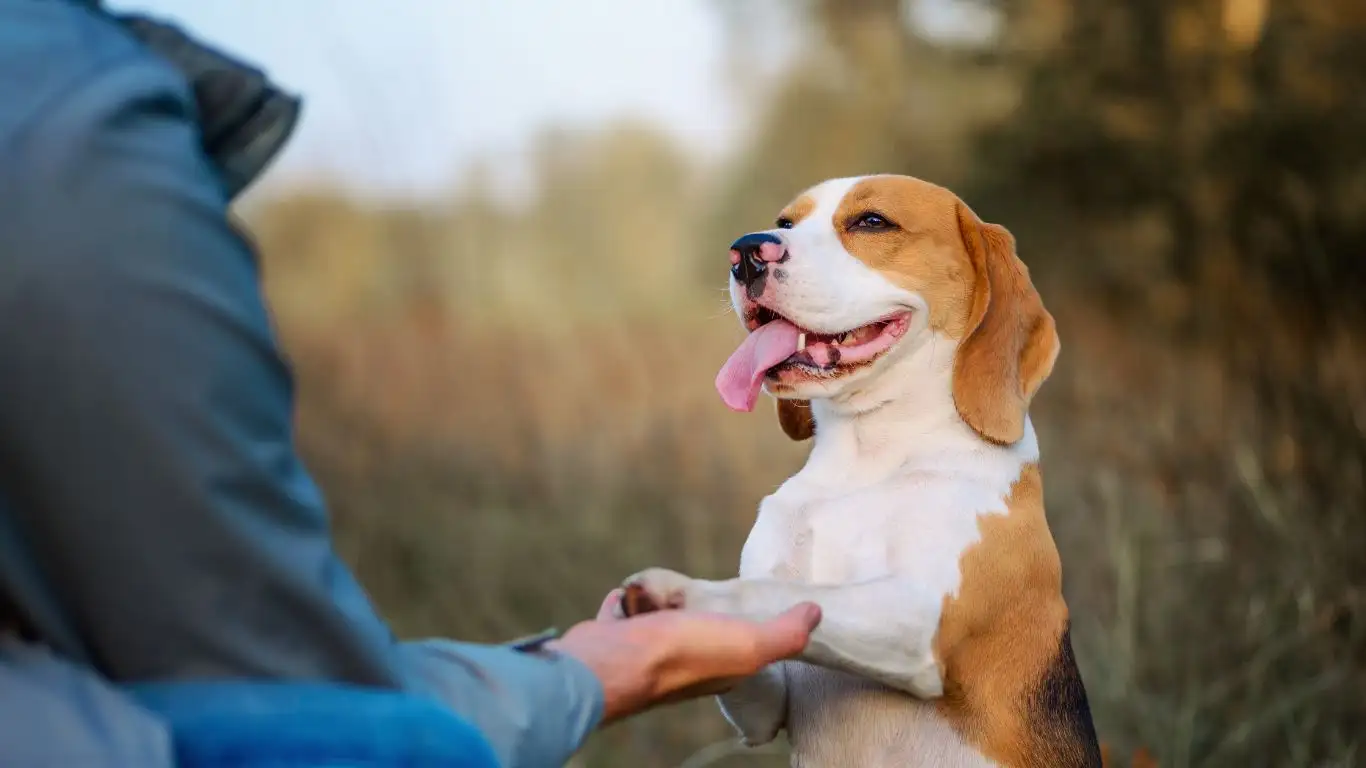
One of the most effective methods I’ve seen for stopping play biting is through positive reinforcement. Instead of punishing your dog for biting, which can create fear or confusion, you focus on rewarding them for good behavior. This approach helps your dog learn what’s expected of them in a clear, non-threatening way.
From my experience, using positive reinforcement creates a much more enjoyable training experience—for both you and your dog! Here’s how you can incorporate it into your training sessions:
1. Reward Calm Behavior
Whenever your dog remains calm during play or responds well to redirection, make sure to reward them. This will help your dog associate calmness with positive outcomes. For instance, when your dog takes a break from play biting and shifts to chewing on a toy or sitting quietly, give them a treat or plenty of praise. This reinforces that good things happen when they choose to stay calm.
2. Use High-Value Treats
In my experience, not all treats are created equal! High-value treats—things that your dog finds extra exciting—are perfect for reinforcing good behavior. For example, if your dog is especially motivated by small pieces of chicken or cheese, use these during your training sessions. The more excited your dog gets about the reward, the more likely they are to repeat the behavior that earned it.
3. Timing is Everything
It’s crucial to reward your dog immediately after they display the desired behavior. This helps them make the connection between their action and the reward. If you wait too long to reward them, they might not understand what they’re being praised for. So, make sure the reward follows the good behavior within a few seconds to create that positive association.
Consistency in Training: Why It Matters
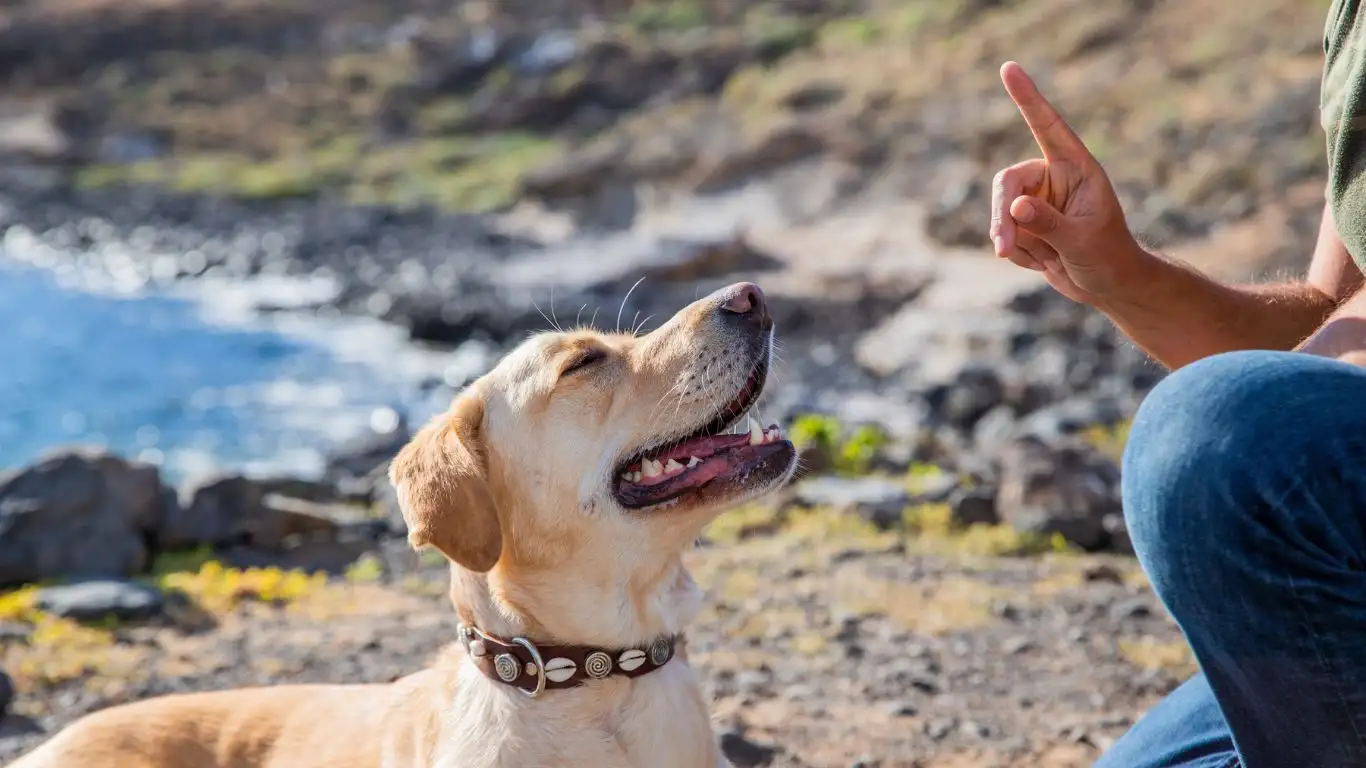
When it comes to dog training, consistency is key. If you want to stop play biting, you need to be consistent in your expectations and your responses. For example, if you allow your dog to bite during one play session but correct them the next, it can create confusion. Your dog won’t understand why the rules seem to change from one day to the next. Consistency helps your dog learn quickly what’s acceptable and what isn’t.
From my years of training experience, I’ve seen firsthand how dogs respond positively to consistent rules. This doesn’t mean you need to be rigid or overly strict—it’s about being clear and predictable. If you want your dog to stop play biting, ensure that everyone in your household is on the same page and follows the same guidelines. Inconsistent training will only delay progress.
1. Set Clear Boundaries
Whether it’s during playtime or everyday interactions, set clear boundaries with your dog. For example, if you want them to stop mouthing your hands, make sure that you are consistent in your responses each time they try to bite. If you let them nibble on your hand one time but correct them the next, they may not understand why their behavior is sometimes okay and other times not.
2. Keep Training Sessions Short but Frequent
Consistency also means keeping your training sessions short but frequent. Training your dog for 5-10 minutes, several times a day, is much more effective than a long session once a week. This helps reinforce the lessons without overwhelming your dog or losing their attention. If you’re training your dog to stop play biting, focus on small, manageable chunks of training so that they don’t become frustrated.
3. Be Patient
Patience is a huge part of consistency. Every dog learns at their own pace, and some may take longer to catch on than others. It’s important to stay patient and positive throughout the process. Progress can be slow at times, but as long as you’re consistent with your approach, your dog will eventually get it. Remember that learning is a process, and mistakes are part of it.
Using Redirection to Manage Play Biting
Another technique I often recommend to clients is redirection. This is especially useful if your dog becomes too excited during play and resorts to biting. By redirecting their focus to an appropriate object or activity, you’re giving them an outlet for their energy without letting the biting behavior continue.
Redirection doesn’t just stop play biting in the moment—it also helps your dog learn what is acceptable behavior. For example, if your dog begins to mouth your hand, immediately offer them a toy to chew on instead. Over time, your dog will start to realize that toys are much more fun than your hands!
1. Use Toys to Redirect Energy
When your dog starts to nip or bite, grab a toy and encourage them to play with it instead. This teaches them that toys are where their focus should be. You can use tug ropes, balls, or any other toy your dog enjoys. The goal is to replace the behavior of play biting with an appropriate behavior—chewing or tugging on a toy.
2. Change the Environment
Sometimes, redirection means changing the environment. If your dog is getting overstimulated during play, it might be time to take a break. Calmly remove yourself from the situation, let your dog settle down, and try again later. This break in the action helps them cool down and shift their focus away from biting.
3. Encourage Calmness with a ‘Pause’ Command
Teaching your dog a “pause” or “settle” command is another great way to manage play biting. This command teaches your dog to stop what they’re doing and focus on you. If you’re in the middle of a play session and your dog starts to get too mouthy, use the pause command to help them reset. When they calm down, reward them with a treat or praise. This helps them understand that calm behavior is more rewarding than play biting.
Dealing with Play Biting in Older Dogs

Play biting isn’t just an issue with puppies—older dogs can also develop this behavior, especially if they weren’t properly trained as puppies. If you’re dealing with an older dog that continues to bite during play, it’s important to approach the situation with patience and persistence.
While older dogs may have more control over their bite than puppies, the behavior can still be challenging to correct. The key to success with older dogs is to reinforce the same concepts used for puppies, but with a bit more focus on managing excitement levels and teaching calmness during play.
- Reinforce Calmness: Older dogs can learn new tricks just like puppies, so reinforce calm behavior consistently. Use the same methods of positive reinforcement and redirection to guide them toward better habits.
- Increase Mental and Physical Stimulation: Sometimes, older dogs bite because they’re bored or not getting enough mental stimulation. Make sure your dog’s routine includes both physical exercise and brain-challenging activities.
By being patient and using consistent training, you can help an older dog overcome play biting and enjoy calm, playful interactions instead.
Handling Setbacks: Staying on Track with Your Dog’s Training
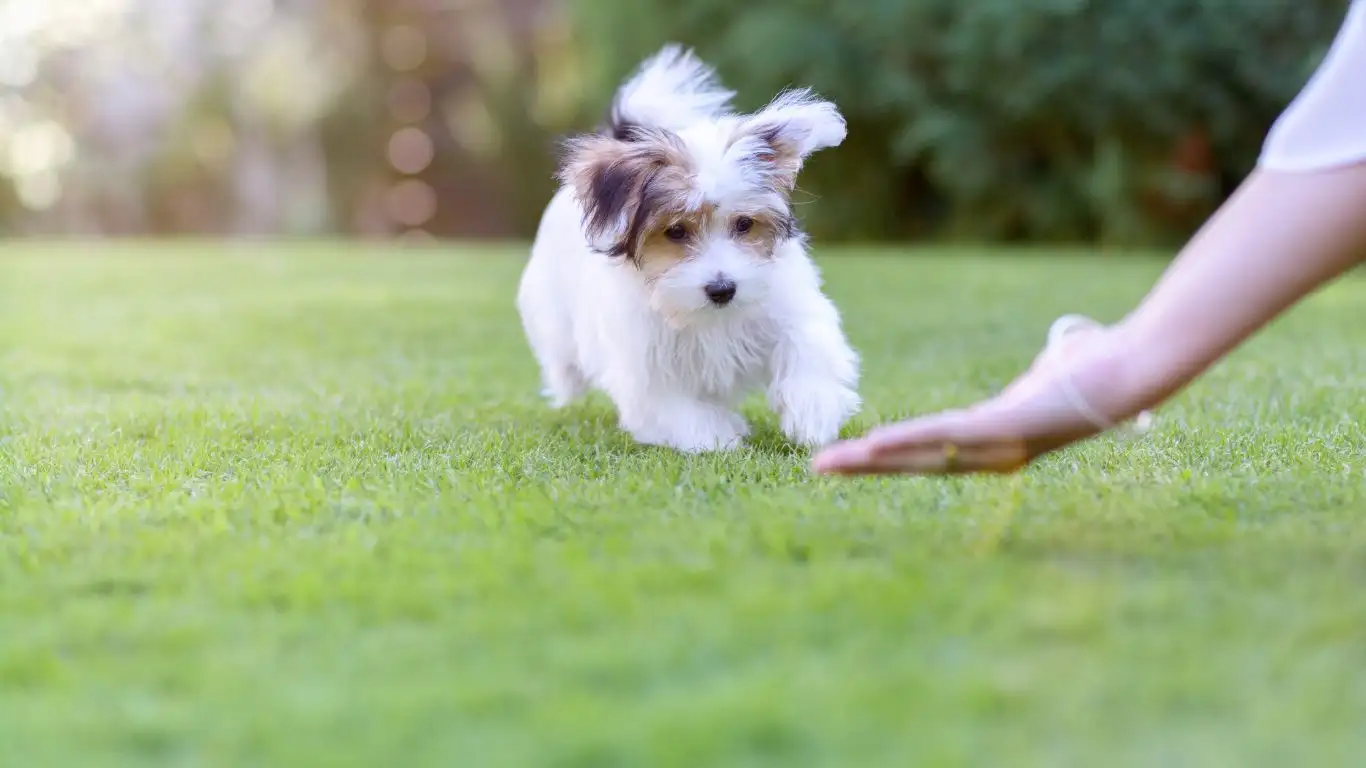
Training your dog to stop play biting isn’t always a smooth ride, and setbacks are a natural part of the process. Even the most well-trained dogs might revert to old behaviors, especially during times of stress or when they’re overly excited. But don’t get discouraged! As a dog trainer with years of experience, I can tell you that setbacks are a sign that your dog is still learning and adjusting to new habits. The important thing is to stay consistent and not to punish your dog when things don’t go as planned.
1. Stay Consistent with Your Training
If you encounter setbacks, remember that consistency is key. If your dog falls back into biting behavior, don’t throw out everything you’ve worked on. Instead, reinforce your training by going back to the basics. Revisit the steps that worked well in the past, such as positive reinforcement and redirection, and keep practicing with your dog. Over time, this will help them learn that play biting still isn’t acceptable behavior.
2. Adjust Your Training Techniques
Sometimes, setbacks happen because the training approach needs to be adjusted. If your dog is still biting despite your efforts, you may need to try a different tactic. For example, if using a toy for redirection isn’t working, try incorporating a “time-out” approach. When your dog starts biting, calmly remove yourself from the situation or guide them to a quiet area for a brief time-out. This lets them cool down and resets the play session.
Additionally, you may want to change up the type of rewards you’re using. Some dogs may lose interest in certain treats after a while. Switch to something new and exciting to reignite their motivation. Every dog is different, and tweaking your approach to fit your dog’s unique personality can help overcome setbacks.
3. Monitor Stress Levels
Play biting can often get worse when a dog is stressed or anxious. Pay attention to the situations where your dog is more likely to bite—perhaps it happens more during social events, when there are loud noises, or when they’re in unfamiliar environments. Managing your dog’s stress levels by providing a calm and consistent routine, offering plenty of exercise, and using calming aids (like aromatherapy or music designed for dogs) can help reduce these triggers.
When to Seek Professional Help

Sometimes, despite all your efforts, your dog’s play biting may persist. If you’ve tried everything and still can’t get the behavior under control, it might be time to seek professional help. As a CPDT-KA certified trainer, I’ve worked with many clients whose dogs required extra attention and specialized training plans. Don’t feel bad about reaching out for help—it’s a sign of a dedicated dog parent who wants what’s best for their pet!
1. Behaviorists vs. Trainers
If you’re struggling with persistent play biting, a behaviorist may be able to assess your dog’s behavior more deeply. While trainers like me focus on teaching dogs specific skills (like stopping play biting), a behaviorist focuses on understanding the underlying emotional or psychological causes of certain behaviors. They can provide a tailored plan to address deep-rooted issues like fear, anxiety, or overexcitement, which could be contributing to the play biting.
2. Group Classes or One-on-One Sessions
If you’re not ready to work with a behaviorist just yet, group classes or private training sessions can still be very effective. Sometimes, having a professional guide you through the training process can provide valuable insights and tweaks to your existing strategy. Whether it’s in a class setting or one-on-one with a trainer, these sessions can offer personalized tips and tricks to stop play biting.
What to Do if Your Dog is Still Play Biting in Adulthood
If your dog is no longer a puppy and is still play biting, it’s possible that the behavior has become a learned habit that’s harder to break. However, it’s not too late to change things. With adult dogs, the goal is to retrain the behavior by using positive reinforcement and clear, consistent boundaries, just like you would with a puppy—but it may require a bit more patience.
1. Revisit Training from the Ground Up
Even though your dog is an adult, revisiting basic training principles can help. Go back to the foundation and use the same methods you would with a puppy, such as teaching bite inhibition, providing redirection, and offering rewards for calm behavior. It might take a little longer for an adult dog to learn new habits, but it’s entirely possible!
2. Use a Structured Routine
For adult dogs, creating a structured routine can also be a big help. Set specific times for training, play, and rest. If your dog has clear expectations of when playtime happens and when it’s time to relax, they will be less likely to engage in unnecessary biting behavior. A well-structured routine provides stability, which is particularly beneficial for adult dogs that may struggle with impulse control.
3. Avoid Encouraging Play Biting
It’s easy to inadvertently encourage play biting if you’re not careful. For example, if you play rough with your dog or encourage them to bite your hands or feet, they might think this behavior is okay. Make sure to avoid encouraging biting, even during play sessions. Instead, guide them to appropriate activities, such as fetch or tug-of-war, where they can use their mouths on toys instead of you!
Maintaining Long-Term Success
Once you’ve successfully stopped your dog from play biting, it’s important to maintain the behavior through ongoing training. Just like any learned skill, if you stop reinforcing good behavior, your dog might start to slip back into old habits. Keep reinforcing the positive behaviors that you want to see, and continue practicing the skills you’ve taught your dog. With enough patience and persistence, you’ll create a long-term solution to the play biting problem.
1. Keep Training Fun
Training doesn’t have to be a chore! In fact, keeping it fun and engaging will make your dog more likely to respond positively to the lessons you’re teaching. Incorporate games, new toys, and even treat puzzles to keep your dog’s mind stimulated and make learning enjoyable. When training is fun, both you and your dog are more likely to stay motivated for the long haul.
2. Celebrate Milestones
It’s important to celebrate your dog’s progress along the way. Whether they’ve gone a whole week without play biting or have learned a new skill, take a moment to acknowledge their success. Positive reinforcement goes both ways—celebrating milestones can help keep both you and your dog motivated to continue training.
Disclaimer
While the information shared in this article is based on my experience as a certified professional dog trainer (CPDT-KA), every dog is different. Results may vary depending on the individual dog’s temperament, age, and previous experiences. If you are facing persistent behavior issues with your dog, consider seeking professional guidance to ensure a personalized and effective approach.
If you’re looking for more tips on dog training or need assistance with specific behavior issues, feel free to reach out to me or visit pawpatron.org for more resources!
